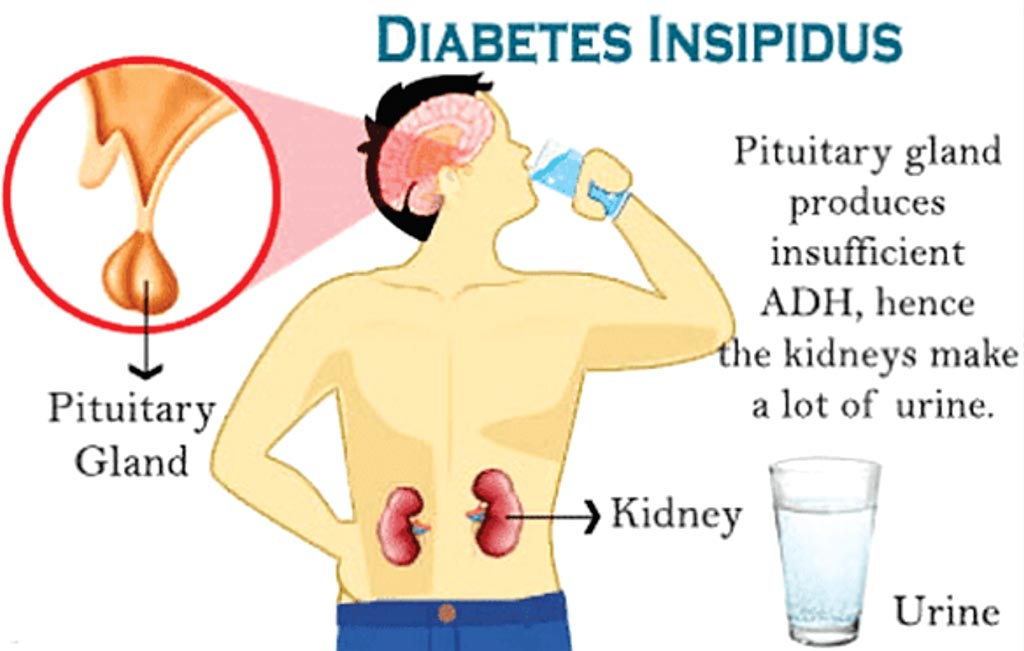Test Enables Quick Diagnosis for Rare Hormone Disorder
By LabMedica International staff writers
Posted on 14 Aug 2018
The indirect water-deprivation test is the current reference standard for the diagnosis of diabetes insipidus. However, it is technically cumbersome to administer, and the results are often inaccurate.Posted on 14 Aug 2018
Drinking more than three liters per day with the equivalent increase in urination is regarded as too much. This drinking by the liter is known as "polyuria-polydipsia syndrome" and usually develops over time through habit, or can be a side effect of a mental illness. In rare cases, however, it may be caused by diabetes insipidus.

Image: A diagram of the causes of diabetes insipidus resulting from the lack of vasopressin (ADH) production in the hypothalamus or the pituitary gland (Photo courtesy of Maria Khatun Mona, RN).
Scientists collaborating with those at the University of Basel (Basel, Switzerland) recruited 156 patients with hypotonic polyuria at 11 medical centers to undergo both water-deprivation and hypertonic saline infusion tests from 2013 to 2017. In the latter test, plasma copeptin was measured when the plasma sodium level had increased to at least 150 mmol/L after infusion of hypertonic saline. The primary outcome was the overall diagnostic accuracy of each test as compared with the final reference diagnosis, which was determined on the basis of medical history, test results, and treatment response, with copeptin levels masked.
The final diagnosis was primary polydipsia in 82 patients (57%), central diabetes insipidus in 59 (41%), and nephrogenic diabetes insipidus in three (2%). Overall, among the 141 patients included in the analysis, the indirect water-deprivation test determined the correct diagnosis in 108 patients with a diagnostic accuracy of 76.6%, and the hypertonic saline infusion test (with a copeptin cutoff level of greater than 4.9 pmol/L determined the correct diagnosis in 136 patients (96.5%). The indirect water-deprivation test correctly distinguished primary polydipsia from partial central diabetes insipidus in 77 of 105 patients (73.3%), and the hypertonic saline infusion test distinguished between the two conditions in 99 of 104 patients (95.2%).
The distinction between what is considered a "harmless" primary polydipsia and a diabetes insipidus is crucial, as their therapy is fundamentally different. Diabetes insipidus must be treated with the hormone vasopressin (or ADH, the antidiuretic hormone), while patients with primary polydipsia require behavioral therapy to reduce their habitual drinking. A wrong therapy can have life-threatening consequences as treatment with vasopressin without indication can lead to water intoxication. The authors concluded that the direct measurement of hypertonic saline–stimulated plasma copeptin had greater diagnostic accuracy than the water-deprivation test in patients with hypotonic polyuria. The study was published on August 2, 2018, in The New England Journal of Medicine.
Related Links:
University of Basel




 assay.jpg)




 Analyzer.jpg)




